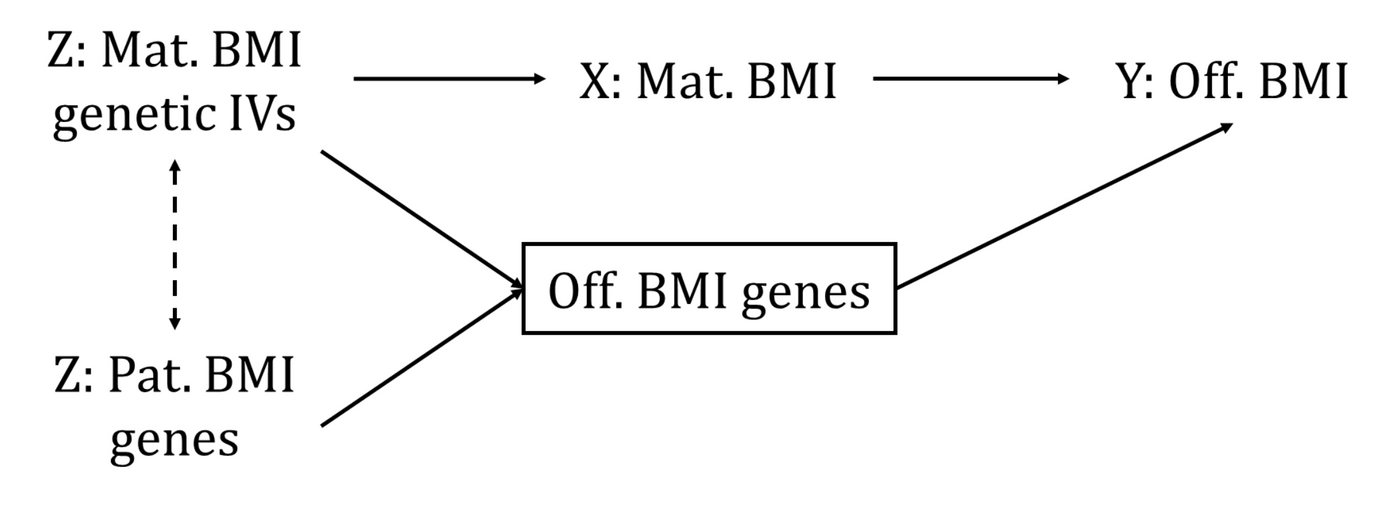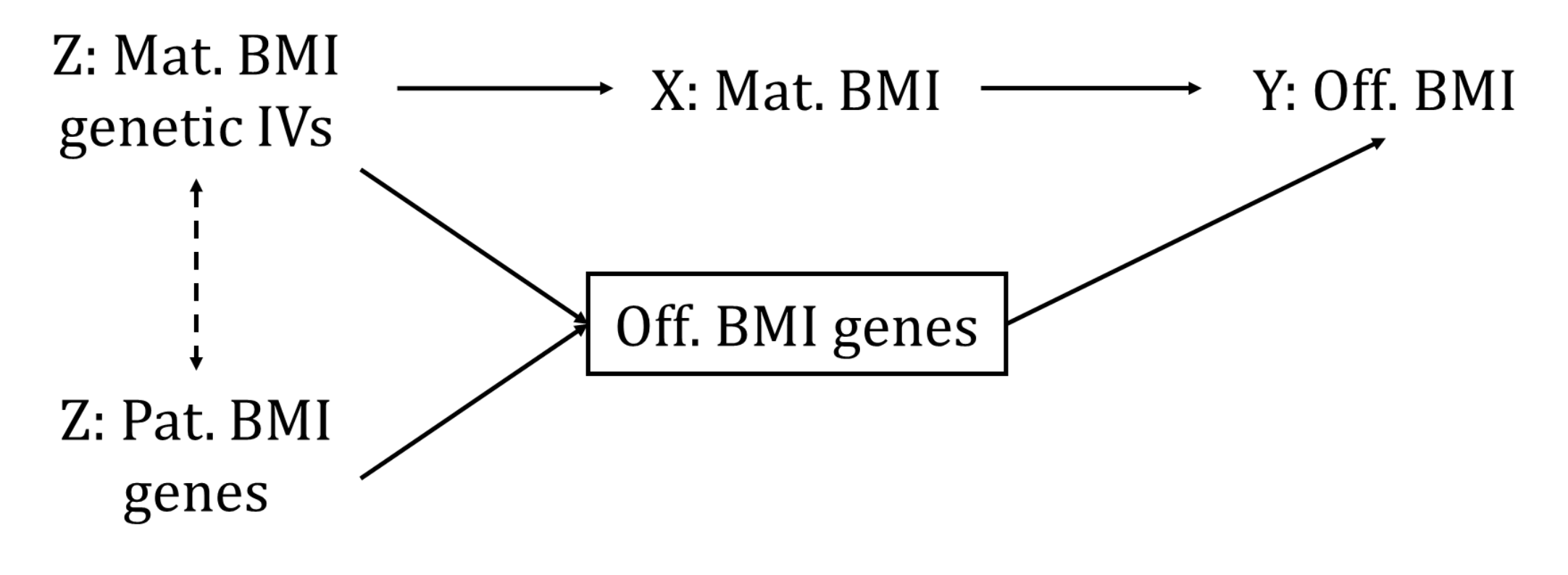A collider is a variable that is a common consequence of two variables. For example, in an epidemiological setting, a collider can be a variable that is caused by both the exposure and the outcome of interest. The term "collider" refers to the fact that, in a directed acyclic graph (DAG), arrow heads showing directional associations from the exposure and outcome variables collide into a third variable (i.e., the collider).
Adjusting for a collider in any epidemiological setting can induce an association between the two variables that cause its variation (e.g., the exposure and outcome in the above example). In an MR context, collider bias can be induced if adjusting for a collider (e.g., the exposure would be a collider of the genetic instrumental variable (IV) and any confounding factors of the exposure and outcome). See Collider bias.

References
Other terms in 'Sources of bias and limitations in MR':
- Assortative mating
- Canalization
- Collider bias
- Conditional F-statistic for multiple exposures
- Confounding
- Exclusion restriction assumption
- F-statistic
- Harmonization (in two-sample MR)
- Homogeneity Assumption
- Horizontal Pleiotropy
- Independence assumption
- INstrument Strength Independent of Direct Effect (InSIDE) assumption
- Intergenerational (or dynastic) effects
- Monotonicity assumption
- MR for testing critical or sensitive periods
- MR for testing developmental origins
- No effect modification assumption
- NO Measurement Error (NOME) assumption
- Non-linear MR
- Non-overlapping samples (in two-sample MR)
- Overfitting
- Pleiotropy
- Population stratification
- R-squared
- Regression dilution bias (attenuation by errors)
- Relevance assumption
- Reverse causality
- Same underlying population (in two-sample MR)
- Statistical power and efficiency
- Vertical pleiotropy
- Weak instrument bias
- Winner's curse

